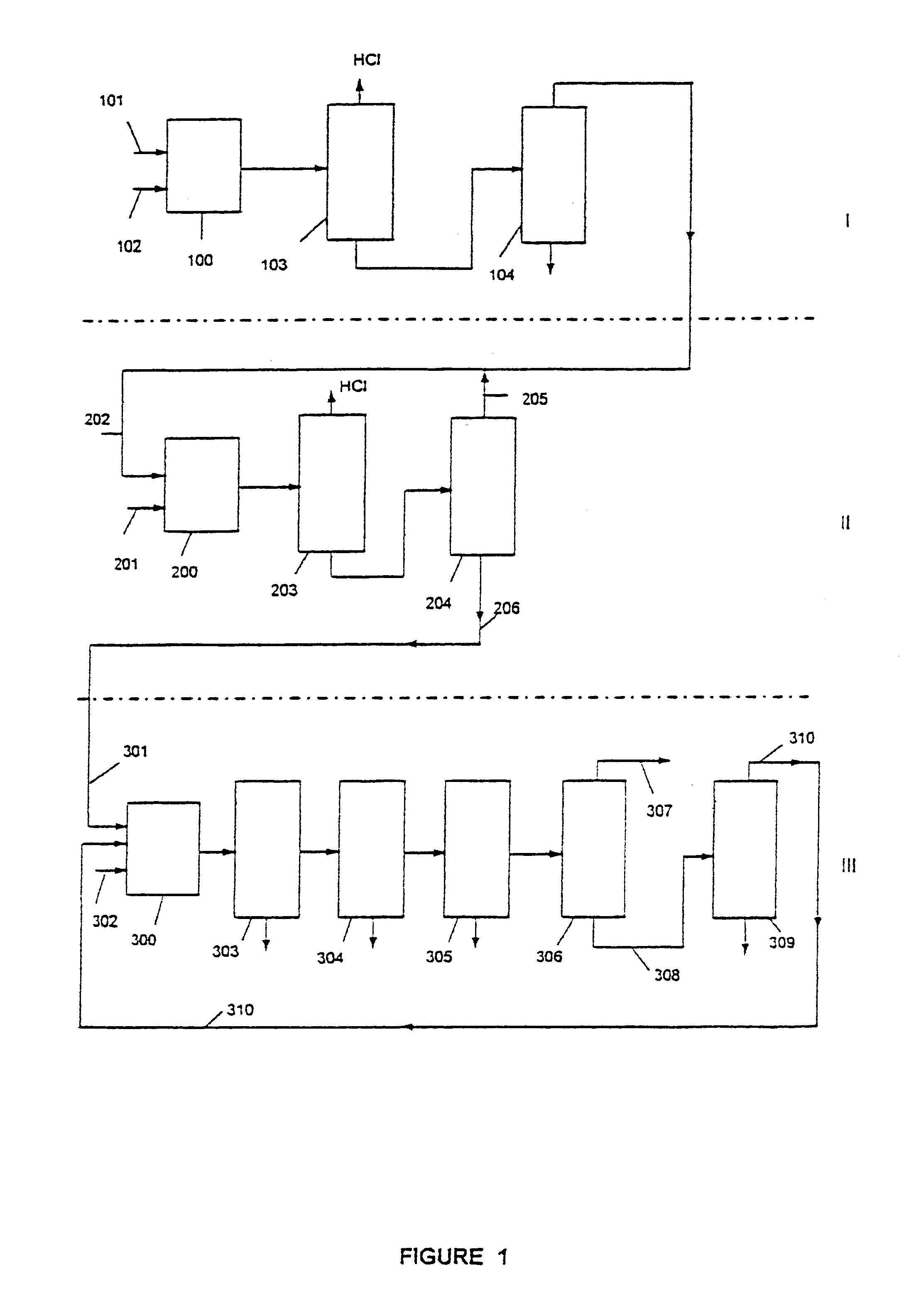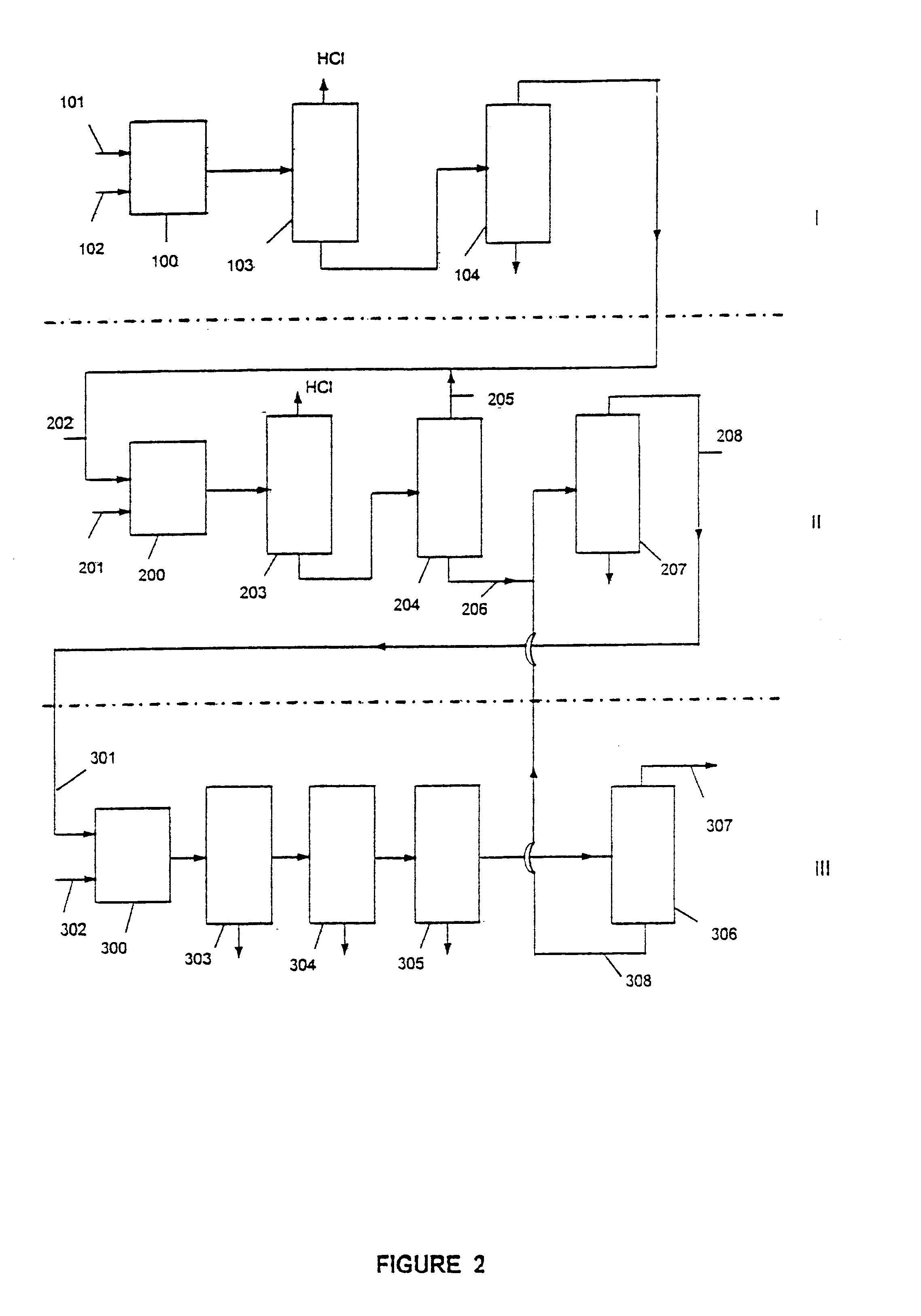Process for preparing 1,1,1-trifluoro-2,2-dichloroethane
a technology of trifluoroethane and difluoroethane, which is applied in the field of process, can solve the problems of not being able to produce this compound under industrially acceptable conditions
- Summary
- Abstract
- Description
- Claims
- Application Information
AI Technical Summary
Benefits of technology
Problems solved by technology
Method used
Image
Examples
example 1
[0077]Preparation of F123 by chlorination of F133a in the presence of HF and an iron-based catalyst.
[0078]75 cm3 of a catalyst based on iron deposited on fluoroalumina, having an Fe content of 12% by weight, are introduced into an Inconel tube with an inside diameter of 21 mm.
[0079]The HF flow rate is adjusted to 0.91 mol / h and the temperature to 270° C. Next, a Cl2 / N2 mixture containing 15 mol % of chlorine is introduced into the reactor at a flow rate of 0.91 mol / h. Finally, CF3—CH2Cl is introduced into the reactor at a flow rate of 0.90 mol / h and the total reaction pressure is adjusted to 15 bar.
[0080]After reaction for 24 h, a gaseous sample is taken for analysis by gas chromatography. Another sample is taken after having removed the HF and chlorine from the flow derived from the reactor by sparging in wash bottles with water and sodium hydroxide / sulphite and then after having dried it over CaCl2. It is similarly analysed by gas chromatography.
[0081]The conversion of F133a is 7....
examples 2 to 4
[0082]Preparation of F123 by chlorinating F133a in the presence of HF and an iron-based catalyst.
[0083]According to the same protocol as in Example 1, various conditions were tested. The test conditions and results obtained are collated in the table below:
[0084]
ConditionsExample 2Example 3Example 4 Temperature (° C.)270280280MR Cl2 / F133a0.250.150.25MR HF / F133a1.11.11.2Tc (s)273227ResultsConversion F133a %9.09.412.6Selectivity towards96.494.893.7F123 %110 / 120 series ratio %3.43.95.7
examples 5 to 7
[0085]Preparation of F123 by chlorinating F133a in the presence of HF and fluoroalumina as catalyst.
[0086]According to the same protocol as in Example 1, but replacing the catalyst with a fluoroalumina, various conditions were tested.
[0087]The test conditions and results obtained are collated in the table below:
[0088]
ConditionsExample 5Example 6Example 7 Temperature (° C.)270280280MR Cl2 / F133a0.230.180.27MR HF / F133a1.01.21.0Tc (s)263529ResultsConversion F133a %7.910.211.9Selectivity towards98.495.996.4F123 %110 / 120 series ratio %1.64.13.4
PUM
| Property | Measurement | Unit |
|---|---|---|
| temperature | aaaaa | aaaaa |
| temperature | aaaaa | aaaaa |
| temperature | aaaaa | aaaaa |
Abstract
Description
Claims
Application Information
 Login to View More
Login to View More - R&D
- Intellectual Property
- Life Sciences
- Materials
- Tech Scout
- Unparalleled Data Quality
- Higher Quality Content
- 60% Fewer Hallucinations
Browse by: Latest US Patents, China's latest patents, Technical Efficacy Thesaurus, Application Domain, Technology Topic, Popular Technical Reports.
© 2025 PatSnap. All rights reserved.Legal|Privacy policy|Modern Slavery Act Transparency Statement|Sitemap|About US| Contact US: help@patsnap.com


